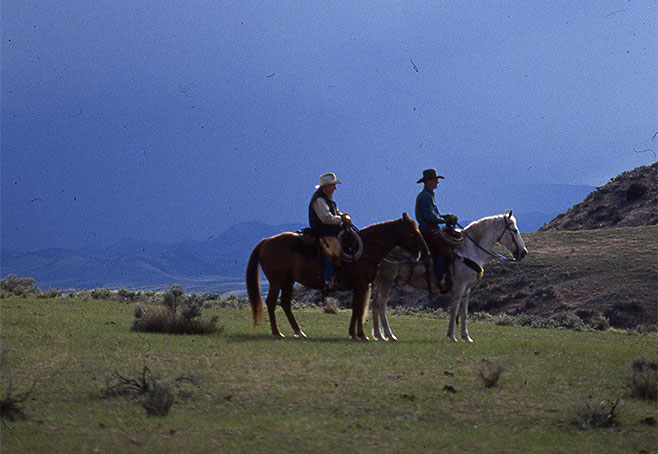Of course, many long time riders discovered this early on in their life. And, many others have been aware of the therapeutic benefits, but there is recent scientific proof of this benefit. I just read an article in “America’s Horse”, by Andrea Caudill, that addressed this, and thought I’d share some of the pertinent points with you fellow horse enthusiasts!
This article focused on an Equine Therapy program in New Mexico, called “Skyline Therapy Services” which “focuses mostly on younger patients, although it has treated people of ages.” According to Ruth Dismuke-Blakely, “That is the beauty of hippotherapy itself as a treatment strategy. You can serve somebody as young as 2 to someone in their 80s.” This program is entirely self-sufficient through medical billing and has all paid professionals – no volunteers!
So, HOW and WHY is this form of therapy so successful? It is from the importance of a movement. According to a side bar in the article:
“If you ride a horse, you probably have experienced the calming feeling after a good ride. But is there actually a reason for it?
‘The basic premise of hippotherapy is you are using equine movement as a means of facilitating all of the neuromuscular systems that support function,” explains Ruth Dismuke-Blakely. “Horses have a four-dimensional movement – they go up and down, side to side, forward and backward and move through space. When someone is astride the horse, they’re getting all those planes of movement. Because they’re roughly at a 90-degree angle to the horse’s pelvis, the horses pelvis is imparting all of its movement up through your pelvis, your core postural system. That core is posture is your stability, your uprightness, your ability to hold yourself up so you can take in air, that’s your ability to ambulate, to use your hands, to talk. Everything depends on that good neuromuscular integrity.
‘The research that has been done in hipportherapy has shown that that movement facilitates core control and all the biomechanics that we as humans use to function. Coincidentally, and very conveniently, that movement of horse with its pelvis is the same movement that humans make. So our pelvis works on those planes of movement, and so does our jaw. So we overlay that horse’s movement on the patient’s neurological system and facilitate.
‘Obviously, if that movement is asymmetrical or choppy or bad movement, that’s going to be bad input to the person. So just like you want a quality movement on the rail in a pleasure class – suitability to purpose – you want a quality movement in the hippotherapy arena, because that movement becomes even more important. It’s going to impacting a disordered neurological system in either a very positive way or it could be in a negative way.
‘Think about the fact that the average horse walks about 100 steps per minute. Five minutes is 500 inputs to the patient; 20 minutes is 2000 inputs to the patient. There is not another therapy tool available in physical, occupational or speech therapy that can provide that kind of intensity of movement. But it goes back to the therapist using this tool to be very cognizant of what kind of movement we’re giving them.’”
The main article goes on to give several moving examples of how hippotherapy helped specific patients. If you are interested in hearing more, you might check out this link Therapeutic Riding.






